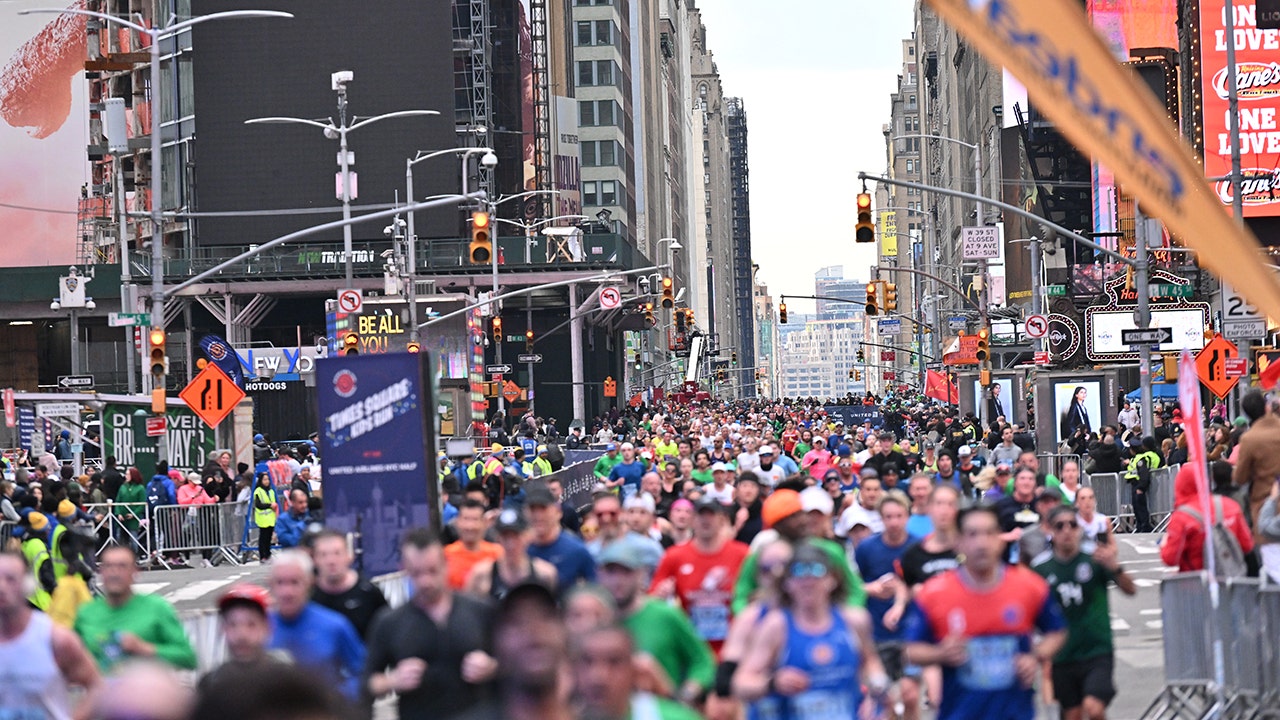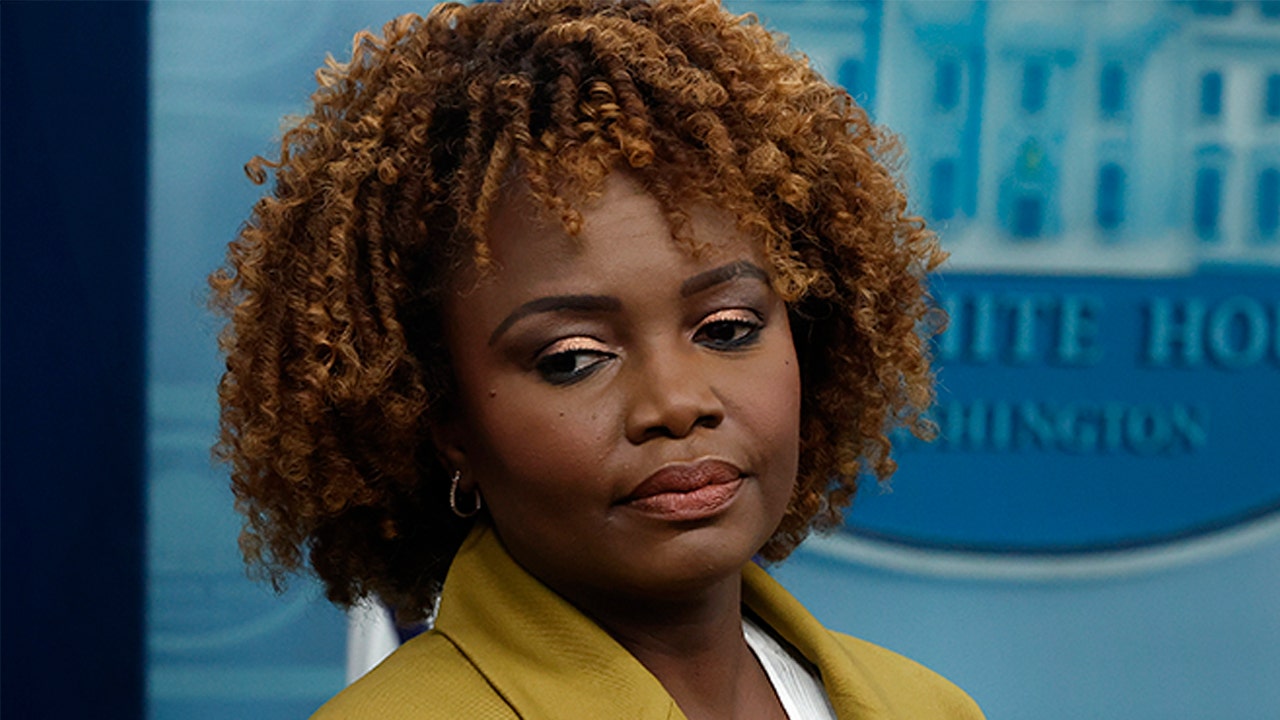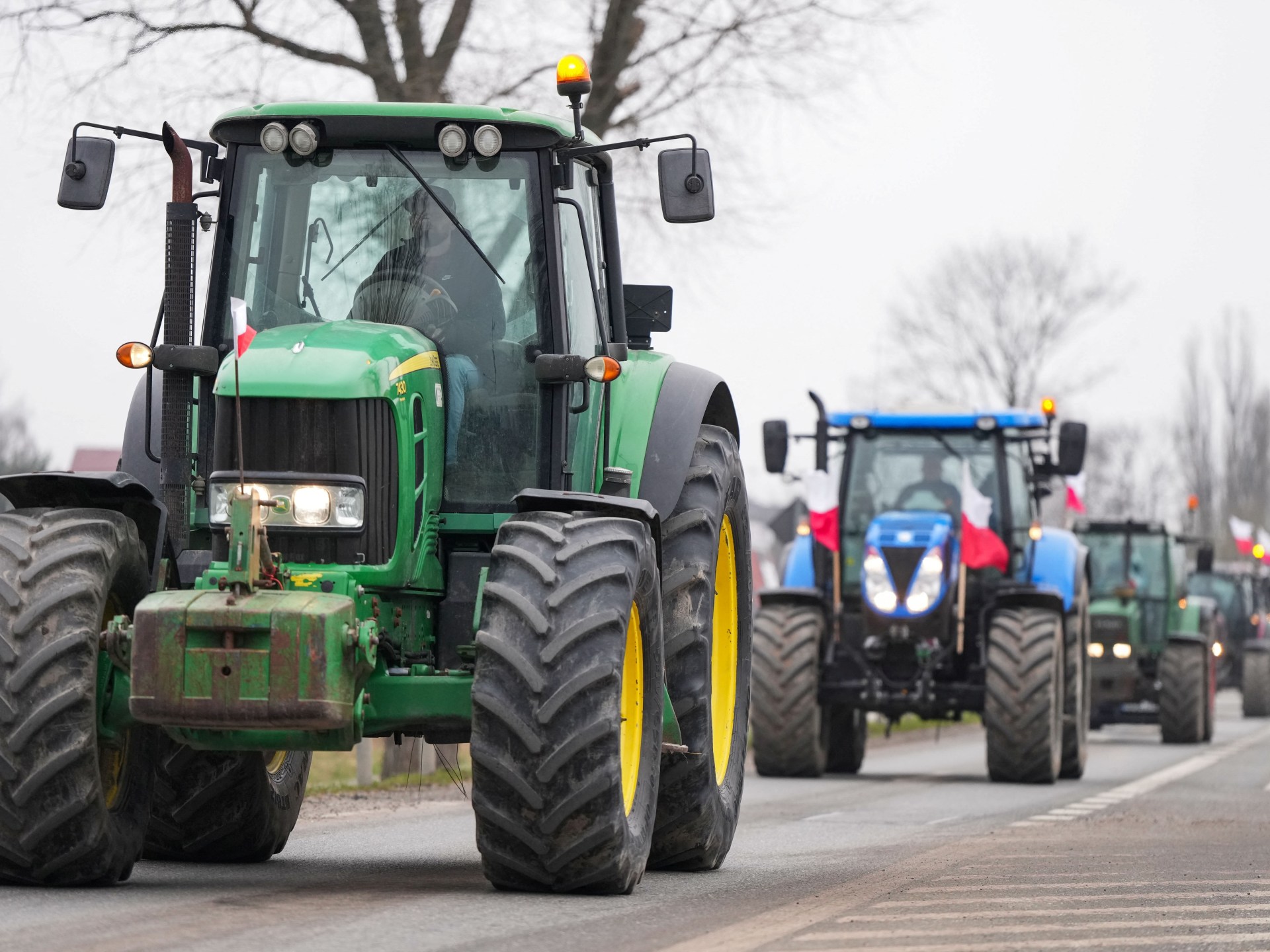World
Israeli artist, curators refuse to open exhibit until cease-fire, hostage deal is reached

The artist representing Israel at this year’s Venice Biennale in Italy, along with its curators, said Tuesday they will not open the Israeli pavilion until a cease-fire and hostage deal are reached in Israel’s months-long war with Hamas in the Gaza Strip.
A sign on the window of the Israeli pavilion posted Tuesday and written in English reads: “The artist and curators of the Israeli pavilion will open the exhibition when a cease-fire and hostage release agreement is reached.”
In a statement, artist Ruth Patir, said she and the curators wanted to show solidarity with the families of the hostages “and the large community in Israel who is calling for change.”
“As an artist and educator, I firmly object to cultural boycott, but I have a significant difficulty in presenting a project that speaks about the vulnerability of life in a time of unfathomed disregard for it,” Patir said in the statement.
JEWISH ORGANIZATION LEADER SAYS ISRAEL WILL BE PROTECTED BY GOD, DESPITE ATTACKS BY IRAN OR ITS PROXIES
Italian soldiers patrol the Israeli national pavilion at the Biennale contemporary art fair in Venice, Italy, Tuesday, April 16, 2024. (AP Photo/Colleen Barry)
Israel is among 88 national participants in the 60th Venice Biennale, which runs from April 20-Nov. 24. The Israeli pavilion was built in 1952 as a permanent representation of Israel inside the Giardini, the original venue of the world’s oldest contemporary art show and the site of 29 national pavilions. Other nations show in the nearby Arsenale or at venues throughout the city.
But even before the statement, curators and critics had signed an open letter calling on the Biennale to exclude the Israeli national pavilion from this year’s show to protest Israel’s war in Gaza. Those opposed to Israel’s presence had also vowed to protest on-site.
Italy’s culture minister had firmly backed Israel’s participation, and the fair was opening amid unusually heightened security.
The national pavilions at Venice are independent of the main show, and each nation decides its own show, which may or may not play into the curator’s vision. Patir’s Israeli exhibit was titled “(M)otherland.”

People stand in front of the closed Israeli national pavilion at the Biennale contemporary art fair in Venice, Italy, Tuesday, April 16, 2024. (AP Photo/Luca Bruno)
The curators of the Israeli pavilion, Mira Lapidot and Tamar Margalit, said they were delaying the opening of the exhibit because of the “horrific war that is raging in Gaza,” but that they hoped the conditions would change, so the exhibit could open for public view.
“There is no end in sight, only the promise of more pain, loss, and devastation. The exhibition is up and the pavilion is waiting to be opened,” they said. For now, a video work made by Patir can be seen through the pavilion window.
The (M)otherland exhibit was set to run from Saturday, April 20, through Sunday, November 24.
The Associated Press contributed to this report.

World
A Colombian army helicopter has crashed in a rural area of the country's north, killing 9 soldiers

An army helicopter carrying supplies to troops crashed in a rural area in northern Colombia on Monday, killing nine soldiers on board, the country’s armed forces said.
In a statement, the Colombian military said the helicopter was taking the supplies to the municipality of Santa Rosa del Sur, an area that has recently experienced fighting between the National Liberation Army guerrilla group and the drug trafficking group known as the Gulf Clan.
TENS OF THOUSANDS OF COLOMBIANS PROTEST AGAINST LEFTIST PRESIDENT’S AGENDA
The military statement described the helicopter crash as an accident.
Nine members of Colombia’s military lost their lives when their helicopter crashed in a rural area of northern Colombia. (Photo by LUIS ROBAYO/AFP via Getty Images)
“I regret the death of the nine passengers on board the army’s helicopter” Colombian president Gustavo Petro wrote on X on Monday. “It was supplying troops…that were conducting operations against the Gulf Clan.”
The military said the helicopter crashed around 1:50 pm local time. It was an MI-17 Russian-built chopper that is often used to carry troops and supplies.
Two officers were among the victims of the crash, which also included two sergeants and three privates. None of the passengers on the helicopter survived.
World
Strack-Zimmermann blasts von der Leyen's defence policy

Marie-Agnes Strack-Zimmermann, one of the lead candidates in the European elections, has issued a blistering verdict of Ursula von der Leyen’s first term in office.
Strack-Zimmermann, who hails from the Alliance of Liberals and Democrats for Europe (ALDE), is part of a three-candidate team representing the liberal forces in the bloc-wide poll between 6 and 9 June. Currently a member of the Bundestag, where she chairs the Defence Committee, she is vying for a seat in the European Parliament.
In a wide-ranging interview with Euronews, the contender denounced the policies of Ursula von der Leyen, the sitting president of the European Commission, in the fields of defence, economy and fundamental rights. Von der Leyen is running for a second mandate and is widely considered the frontrunner.
“I’m absolutely disappointed,” Strack-Zimmermann said on Monday, speaking in Maastricht hours before a debate with all lead candidates.
The liberal assailed the incumbent for taking too long to put defence at the very top of the EU agenda, only doing so, she said, after Russian troops broke through the borders of Ukraine and unleashed the largest armed conflict in the continent since World War II.
The wait, she added, was particularly striking considering von der Leyen had previously served as defence minister under the government of Chancellor Angela Merkel.
“I have no idea why she didn’t talk about military security when she started to be the president of the Commission because she knows the topic, she has an idea of what happened,” she said, referring to the 2014 annexation of Crimea.
“I was surprised that didn’t say: ‘Come on, we have to do more in Europe,’ because she has the experience.”
When Russia’s invasion began in February 2022, von der Leyen’s executive was still dealing with the shockwaves sent by the COVID-19 pandemic and the roll-out of the recovery fund, built up by record-breaking amounts of joint borrowing and beefed up with stringent spending conditions to accelerate the green and digital transitions.
But in Strack-Zimmermann’s view, this does not cut it as an excuse for procrastination.
“I know the pandemic situation was terrible for everybody. But even then, you could see what (was happening) in Russia. And it was not this or that, it was both. I think if you are the head of the Commission, there is not one (single) topic,” she told Euronews.
“It’s not a very sexy topic talking about weapons, talking about war. It sounds nicer if you are talking about the Green Deal, it’s a softer topic.”
The failure to provide 1 million rounds of artillery shells by March 2024, as the bloc famously promised to Kyiv, underlines the overall fiasco, she added. “It’s a question of time. It’s a question (of) if you say we will deliver it, we have to do it.”
On the economic front, the contender warned environmental policies and excessive bureaucracy put a damper on growth, scared entrepreneurs away and killed “every moment to have ideas to stay in Europe as a company.”
Regarding the protection of fundamental rights, Strack-Zimmermann said it was “unbelievable” that the Commission had unfrozen €10.2 billion in cohesion funds for Hungary one day before a crucial summit that Viktor Orbán had threatened to blow up.
Brussels argued the release was inevitable after Budapest approved a reform to address long-standing concerns about judicial independence. But the overhaul was deemed insufficient by the European Parliament, which filed a lawsuit against the Commission.
“Everybody was very irritated,” Strack-Zimmermann said. “She’s responsible for it. And you could see that the Parliament is not amused about this situation.”
Despite her harsh assessment, the liberal admitted that being a Commission president was a “hard job.”
This interview is part of an ongoing series with all the Spitzenkandidaten. The full interview with Strack-Zimmermann will air on Euronews over the weekend.
World
US to require automatic emergency braking on new vehicles in 5 years and set performance standards
DETROIT (AP) — In the not-too-distant future, automatic emergency braking will have to come standard on all new passenger vehicles in the United States, a requirement that the government says will save hundreds of lives and prevent thousands of injuries every year.
The National Highway Traffic Safety Administration unveiled the final version of the new regulation on Monday and called it the most significant safety rule in the past two decades. It’s designed to prevent many rear-end and pedestrian collisions and reduce the roughly 40,000 traffic deaths that happen each year.
“We’re living through a crisis in roadway deaths,” Transportation Secretary Pete Buttigieg said in an interview. “So we need to do something about it.”
It’s the U.S. government’s first attempt to regulate automated driving functions and is likely to help curb some of the problems that have surfaced with driver-assist and fully automated driving systems.
Although about 90% of new vehicles have the automatic braking standard now under a voluntary agreement with automakers, at present there are no performance requirements, so some systems are may not be that effective. The new regulations set standards for vehicles to automatically stop and avoid hitting other vehicles or pedestrians, even at night.
“Part of how I think we’re going to turn the corner on the unacceptable level of roadway deaths that we just lived with for my entire lifetime is through these kinds of technologies,” said Buttigieg, who is 42. “We need to make sure we set high performance standards.”
The regulation, which will require additional engineering to bolster software and possibly add hardware such as radar, won’t go into effect for more than five years. That will give automakers time to bolster their systems during the normal model update cycle, NHTSA said.
It also will drive up prices, which NHTSA estimates at $354 million per year in 2020 dollars, or $82 per vehicle. But Buttigieg said it will save 362 lives per year, prevent about 24,000 injuries and save billions in property damage.
Critics say the standards should have come sooner, and that they don’t appear to require that the systems spot people on bicycles, scooters or other vulnerable people.
The new rule requires all passenger vehicles weighing 10,000 pounds (4,500 kilograms) or less to have forward collision warning, automatic emergency braking and pedestrian detection braking.
The standards require vehicles to stop and avoid hitting a vehicle in front of them at speeds up to 62 miles per hour (100 kilometers per hour). Also they must apply the brakes automatically at up to 90 mph (145 kph) if a collision with vehicle ahead is imminent.
The systems also have to spot pedestrians during the day and night, and must stop and avoid a pedestrian at 31 mph to 40 mph (50 kph to 64 kph) depending on the pedestrian’s location and movement.
The agency said that in 2019, nearly 2.2 million rear-end crashes were reported to police nationwide, killing 1,798 people and injuring 574,000 others. Sixty percent of fatal rear-end crashes and 73% of injury crashes were on roads with speed limits of 60 mph (97 kph) or below.
In addition, there were 6,272 pedestrians killed in crashes, with 65% of those people being hit by the front of a passenger vehicle.
The vast majority of deaths, injuries and property damage happens at speeds above 25 mph (40 kph), speeds that are not covered by the voluntary agreement, the agency said.
“Only regulation can ensure that all vehicles are equipped with AEB (automatic emergency braking) that meet minimum performance requirements,” the regulation says.
NHTSA would conduct random tests to determine whether automakers are meeting the standards.
The agency said it isn’t requiring what type of sensors each automaker must have to meet the requirements. That’s up to the automakers. But in testing of 17 vehicles, only one — a 2023 Toyota Corolla equipped with cameras and radar — met the standards.
The regulation said radar would have to be added to about 5% of the systems in order to comply with the requirements.
Cathy Chase, president of Advocates for Highway and Auto Safety, said the new standards will make it clear to car buyers that AEB will work properly. Most consumers, she said, are unaware that there are no requirements in place now.
“By and large, it’s better to have AEB than not have AEB,” she said. “So once the AEB rule is put into place, once again the federal government will be doing its job and protecting consumers.”
NHTSA said it changed its original proposal, giving automakers more than five years to meet the standards instead of three. Chase said shorter would be better.
“The shorter the timeline, the more people are going to be saved, the quicker these are going to get into cars and our roadways are going to be safer for everyone,” she said.
Chase said she is not pleased that the rule does not appear to include standards for bicyclists or people using scooters.
-

 World1 week ago
World1 week agoShipping firms plead for UN help amid escalating Middle East conflict
-

 Politics1 week ago
Politics1 week agoICE chief says this foreign adversary isn’t taking back its illegal immigrants
-

 Politics1 week ago
Politics1 week ago'Nothing more backwards' than US funding Ukraine border security but not our own, conservatives say
-

 News1 week ago
News1 week agoThe San Francisco Zoo will receive a pair of pandas from China
-

 World1 week ago
World1 week agoTwo Mexican mayoral contenders found dead on same day
-

 World1 week ago
World1 week agoBrussels, my love? The EU single market is not sexy enough for voters
-

 Politics1 week ago
Politics1 week agoRepublican aims to break decades long Senate election losing streak in this blue state
-

 World1 week ago
World1 week agoEU sanctions extremist Israeli settlers over violence in the West Bank


/cdn.vox-cdn.com/uploads/chorus_asset/file/25426212/GMVbcTFWgAAOeLo.jpeg)









